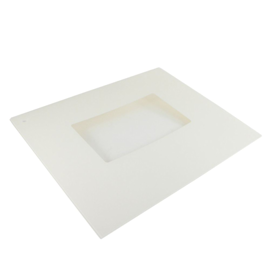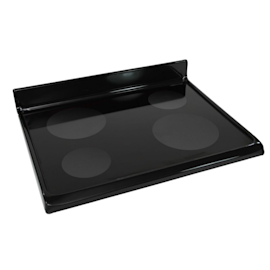- Kenmore refrigerator water filters
- Whirlpool refrigerator water filters
- Samsung refrigerator water filters
- GE refrigerator water filters
- LG refrigerator water filters
- Frigidaire refrigerator water filters
- KitchenAid refrigerator water filters
- Maytag refrigerator water filters
- Kenmore Elite refrigerator water filters
- Estate refrigerator water filters
- GE Profile refrigerator water filters
- Amana refrigerator water filters
- Bosch refrigerator water filters
- Dacor refrigerator water filters
- Electrolux refrigerator water filters
How is cooking on an electric range different than cooking on a gas stove?


Many Americans are contemplating a switch from gas cooking to electric cooking – paralleling the move from gas vehicles to electric vehicles. Upcoming rebates offered in the HEEHRA provisions of the 2022 Inflation Reduction Act can help homeowners switch their gas range to an electric stove for little or no cost. Low- to moderate-income households will soon be able to get up to an $840 instant rebate to replace a gas stove with an electric range. Additional rebates will be available for revisions of wiring and breaker boxes to convert a gas range to an electric stove.
Even with all of these upcoming incentives to switch to electric ranges, many cooks are hesitate to embrace the change to electric cooking. Many cooks tout the attributes of gas cooking that they don’t want to give up.
How is gas cooking better than electric cooking?
Cooks point out these distinct advantages of using a gas cooktop:
Instant heat. The flame from a gas burner immediately begins to heat the bottom of a pot or pan. On an electric cooktop, the element takes a while to heat up. On an electric range with a ceramic glass top, the element has to heat up the ceramic glass surface and then the bottom of the pot or pan – that takes a while.
Precise heat control. Turning down a gas burner immediately reduces the amount of heat applied to the bottom of a cooking container. On an electric stovetop, reducing the heat applied to the bottom of a pot or pan takes more time because the element or ceramic glass cooking surface takes a while to cool down. You can also control simmering using a gas burner more precisely because the flame supplies a constant amount of heat. Most electric range surface elements cycle on and off at low-heat settings.
Constant heat. While the flame on a gas burner stays constant, the element on an electric range will cycle on and off to maintain a selected heat setting. You can typically bring a pot of water to a boil faster using a gas burner and you can keep it boiling at a consistent rate. Canners enjoy this aspect of a gas stove because they need to precisely control the water temperature and boiling rate for bath water when processing jars. An electric surface element that cycles on and off can frustrate a canner when controlling a canning bath. Additionally, simmering at a precise rate is also easier with a gas range because you can set the flame at a constant level. An electric heating element will typically cycle on and off at low-heat settings so simmering can be inconsistent.
Many cooks may not even notice these aspects of gas cooking – they just like their gas stove. On the other hand, avid cooks passionately appreciate the precise heat control they enjoy when cooking with gas.
What are the advantages of using an electric stove?
Electric stoves do offer some advantages over gas ranges.
Precise oven broiling. Electric broiling elements deliver heat evenly and uniformly across the top of the oven cavity. Gas broil burners can’t distribute heat as evenly as electric broil elements.
No carbon monoxide or explosion risk. Because electric ranges don’t use flames, there’s no risk of carbon monoxide poisoning or risk of explosive fires from a gas leak or an unlit surface burner being left on.
Surface elements use high-temperature limit switches. High-temperature limit switches on surface elements of electric stoves limit the surface temperature and energy use. If you accidentally leave an electric surface element on, surface temperature of the element is limited by the safety switch.
Electric induction ranges offer additional advantages over gas ranges and conventional electric ranges.
Induction cooktops use an electromagnetic field to transfer energy to the pot or pan.
They heat food faster and use less energy than gas and conventional stove burners.
Cooktop surfaces don’t get as hot as gas range or conventional electric cooktop surfaces on induction ranges.
If you’re switching from a gas stove to an electric range, consider buying an induction electric range to enjoy these advantages of induction cooking.
Is a Gas Stove Dangerous?
Debates about whether a gas stove is dangerous have been ignited across the country after U.S. Consumer Product Safety Commissioner Richard Trumpka, Jr. commented to Bloomberg News on January 9, 2023 that emissions from gas stoves are a “hidden hazard.” The same day, he also tweeted that “Gas stoves can emit dangerous levels of toxic chemicals – even when not in use.”
The Rocky Mountain Institute (RMI) and several other organizations published a report indicating that gas stoves “can lead to unhealthy levels of indoor air pollution.” That report also alleged that gas stoves “cause or aggravate asthma conditions” – especially in children.
Based on just this information, you may be already convinced that gas stoves are indeed dangerous.
Gas range enthusiasts are not so quick to condemn their favorite appliance.
The American Gas Association (AGA) points out that the RMI report noted above “does not demonstrate a causal relationship between gas stove use and asthma.” On January 13, 2023, RMI publicly admitted that their report “does not assume or estimate a causal relationship” between childhood asthma and natural gas stoves.
The AGA argues that “the study Cooking Fuels and Prevalence of Asthma: A Global Analysis of Phase Three of the International Study of Asthma and Allergies in Childhood (ISAAC), which analyzed 512,707 primary and secondary school children from 108 centers in 47 countries, found no evidence of an association between the use of gas as a cooking fuel and either asthma symptoms or asthma diagnosis.”
The AGA points out that “Indoor air quality studies have consistently found that emissions from the cooking process – not solely from the burner or heat source operation – represent the chief source of concern with respect to indoor air quality for various classes of pollutants such as particulate matter and volatile organic compounds. The emissions of concern are dominated by the smoke and grease that comes from cooking, regardless of the energy source used in conventional residential appliances.”
Whether you’re convinced one way or the other about the inherent safety of a gas stove, ventilating your kitchen by running the range hood fan will always help improve indoor air quality while cooking. You can also open windows in your kitchen when climate permits.
How is switching to an electric stove better for the environment?
There’s no doubt that switching from a gas range to an electric stove will reduce carbon gas emissions. Using electricity (from renewable energy sources) to cook will definitely reduce carbon dioxide emissions.
A greater environment impact could be realized by eliminating all gas appliances. The supply chain of gas to residential homes and businesses leaks harmful methane gas continuously. Getting rid of the gas supply chain would eliminate a significant source of greenhouse gas.
Collectively, we can all improve the environment by giving up gas appliances and going all-electric.
If you have gas appliances, consider replacing them with electric appliances when they wear out. You may be able to get instant rebates through provisions in the 2022 Inflation Reduction Act to help you replace gas appliances with electric versions.
Symptoms for electric ranges
Main causes: faulty surface element, burner control switch failure, temperature limiter not working properly, loose wiri…
Main causes: impact from dropping an item on the glass surface, ceramic glass surface flaw, surface element temperature …
Repair guides for electric ranges

How to replace a range hidden bake element
These step-by-step instructions guide you through replacing the oven hidden bake element in an electric range.…
Repair difficulty
Time required
30 minutes or less

How to replace an electric range oven door outer glass panel
Learn how to replace a damaged outer window panel on your oven door with these step-by-step instructions. …
Repair difficulty
Time required
45 minutes or less

How to replace a range glass cooktop
These step-by-step instructions explain how to replace a damaged ceramic glass cooktop on an electric range. …
Repair difficulty
Time required
45 minutes or less
Articles and videos for electric ranges

Learn about the differences between cooking on gas and electric stoves.…

Learn about all the convenient features on our Sears PartsDirect website that make your parts purchases easier.…

Get answers to frequently asked questions about Sears and Sears PartsDirect.…